At Embedded World, February 2015, Supermicro announced their Embedded Building Block Solutions that included a series of small form factor dual processor solutions. Motherboards like the Supermicro X10DRL-i form the base for small, short depth, 1U Superservers by Supermicro. These motherboards provide large storage capabilities, a multitude of expansion options and fast networks for high density server solutions. Today we are taking a look at the Supermicro X10DRL-i.
Supermicro X10DRL-i Overview
Here we get a look at the Supermicro X10DRL-i server motherboard. The first thing to notice is its small form factor of ATX 10” x 12” size. We have seen a few dual processor boards this size but generally they are special purpose boards, the X10DRL-i is a multi-purpose motherboard and packs a lot of features.
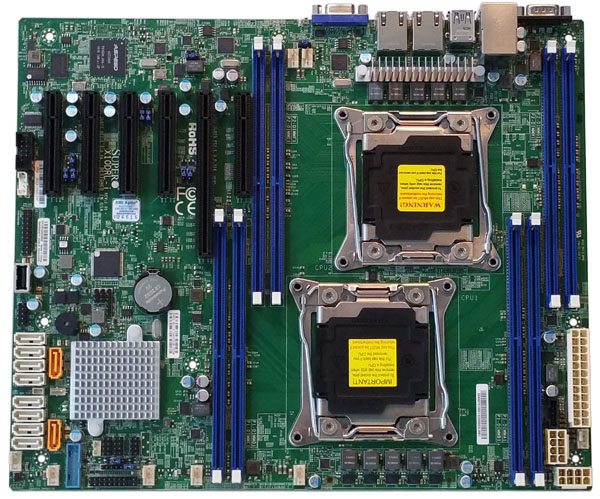
Supermicro X10DRL-i Specifications:
- Processor: Intel Xeon processor E5-2600 v3 family (up to 145W TDP)
- Expansion Slots: 3x PCIe 3.0 x8, 1x PCIe 3.0 x16, 1x PCIe 3.0 x4 (in x8), 1x PCIe 2.0 x4 (in x8)
- Memory: 8x DDR4 DIMM Slots, up to 512GB ECC LRDIMM, 256GB ECC RDIMM
- SATA Ports: 10x SATA3 (6Gbps) ports, supporting Raid 0, 1, 5, 10
- Network: Dual Intel i210 Gigabit (10/100/1000 Mb/s)
- I/O Ports: 4x USB 3.0, 5x USB 2.0 ports
The processor sockets are placed rather close together, this works well with passive heat sinks but may be a problem if you plan on using active heat sinks that have fans on both sides of the heat sink. The mounting pattern for thermal solutions on this motherboard is a Square ILM which has many great cooling solutions available. We also see the RAM slots are staggered quite a bit which limits what expansion card that can fit into PCIe slot number 6, normally cards that would be used in this location should fit in this slot fine.
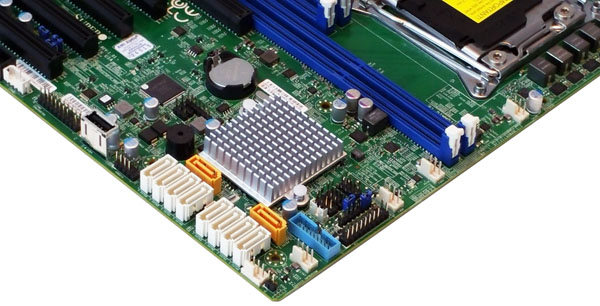
Here we get a look at the storage ports available on the X10DRL-i. The C612 Chipset is located under the big aluminum heat sink with 10x SATA3.0 ports.
The two orange SATA3.0 ports support SATA DOM (Device-on-Module) devices with latch power.
The four SATA3.0 ports at the top are and the two Orange ports are supplied through the PCH C612 which provide serial-link signal connections which are generally faster than the bottom four SATA3.0 ports supplied through Parallel ATA.
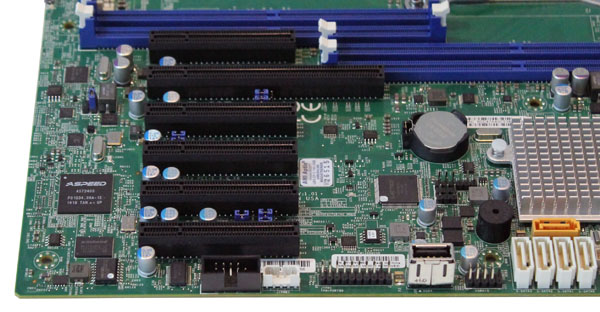
Taking a look at the PCIe slots here which are number with PCIe slot #1 the closest to the motherboards edge. This is a fairly standard configuration for PCIe slots.
- (1) PCI-Express 2.0 x4 in x8 slot (PCH Slot1)
- (3) PCI Express 3.0 x8 slots (CPU1 Slot2/CPU1 Slot3/CPU1 Slot6)
- (1) PCI-Express 3.0 x4 in x8 slot (CPU2 Slot4)
- (1) PCI-Express 3.0 x16 slot (CPU1 Slot5)
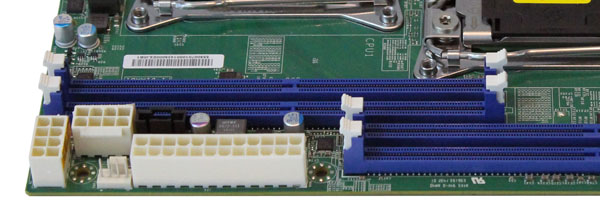
We like that Supermicro has provided the power connects all in one corner which makes it easy for cabling. They are rather close together but we found no issues installing the power connectors or removing them.

At the back of the motherboard we find the I/O outputs which include Serial and VGA outputs and a remote management port located on top of the two USB 2.0 ports. Typically we do not need a lot of USB ports on a server motherboard and space is tight on the X10DRL-i.
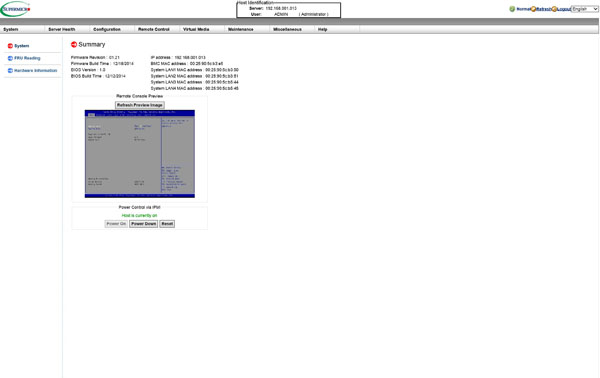
Bringing up IPMI remote management on the X10DRL-I and we see the usual Supermicro IPMI screen. We also like that iKVM is built into Supermicro’s motherboards and there is no need for a module to be installed to activate this feature.
The default login information for the Supermicro X10DRL-i IPMI interfaces is:
- Username: ADMIN
- Password: ADMIN
As a best practice, administrative users should change factory default Username/ Password logins before connecting any new server to their network.
Using Supermicro’s built in iKVM we can access the system and take full control. We like that iKVM is built in and does not require a module for this feature. The BIOS for the X10DRL-i is typical for Supermicro motherboards and we had no issues configuring our system for testing.
Test Configuration
For testing we will use our typical load out that we use for our motherboard tests.
- Processors: 2x Intel Xeon E5-2699 v3 processors
- Memory: 8x 16GB Crucial DDR4 (128GB Total)
- Storage: 1x SanDisk X210 512GB SSD
- Operating Systems: Ubuntu 14.04 LTS and Windows Server 2012 R2
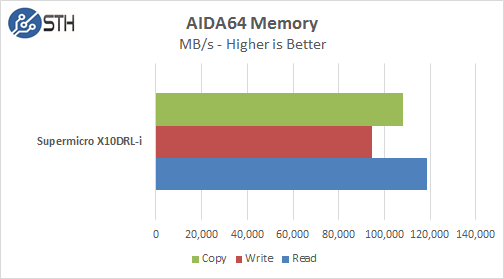
On the X10DRL-i we only have 4x DIMM slots per CPU which enables us to run at Quad Channel memory speeds of 2133MHz. The results of AIDA Memory test compare well with other boards in this line up, like the X10DRL-CT and is one of the stronger boards we have tested.
Memory Latency ranged at ~107ns and our average systems using 8x 16GB DIMM’s ranged about ~105ns.
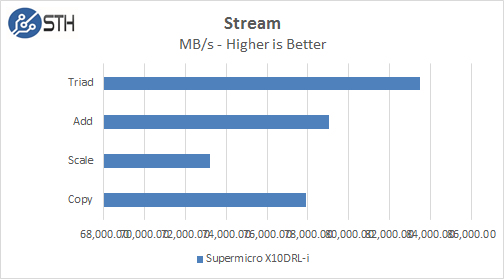
Our Stream test results showed similar results compared to a system running 8x 16GB DIMM’s like the X10DRL-CT. Again this test is showing to be one of the stronger boards we have tested.
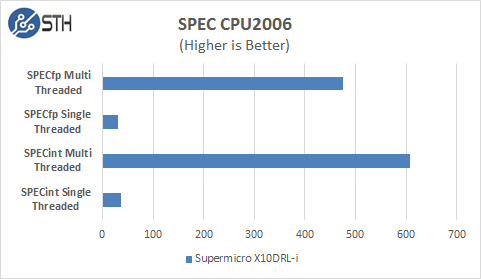
When time permits we like to run SPEC CPU2006 on our systems. This is a long test and can take up to four days to complete. We only use the base test runs with no special optimizations or add-ons. Single threaded runs benefit most from higher clock speeds. Multi-core runs measure the throughput of the system and more cores/threads have a greater effect of the results.
The dual E5-2699 v3 CPU’s we run on our tests are amazing processors with 36 cores / 72 threads running and can really punch up multi-threaded results and handle heavy workloads.
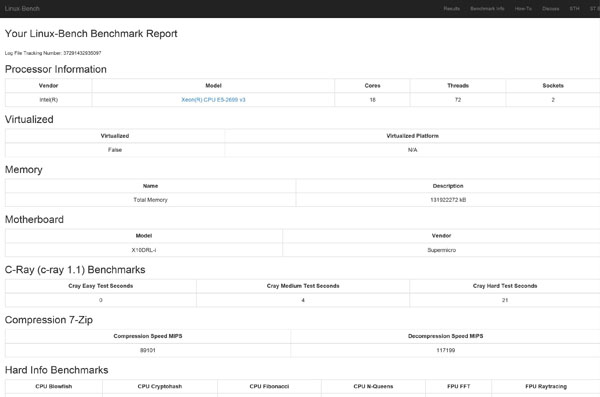
The full test results for our Linux-Bench run can be found here. Supermicro X10DRL-i Linux-Bench Results
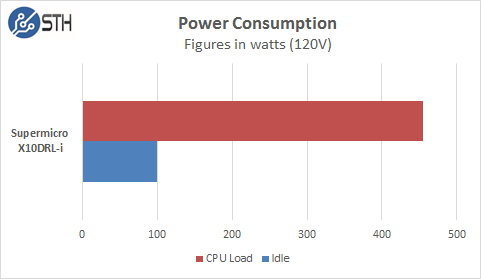
The average idle power use of the X10DRL-i was ~100watts which is what we expect with a server board and the E5-2699 V3’s we use. Maxing out the system under heavy AIDA64 Stress Test, we saw ~475watts pulled for the entire system, this is only for a barebones system and a fully loaded server would show higher results.
Conclusion
The new lineup of server boards using the ATX form factor that include the X10DAL-i, create very powerful small form factor systems for Supermicro.
The typical system SKU that Supermicro offers with boards like the X10DRL-i include several 1U servers like the SYS-6018R-MTR and SYS-6018R-MT. These systems are compact and offer strong storage/network and processing power options.
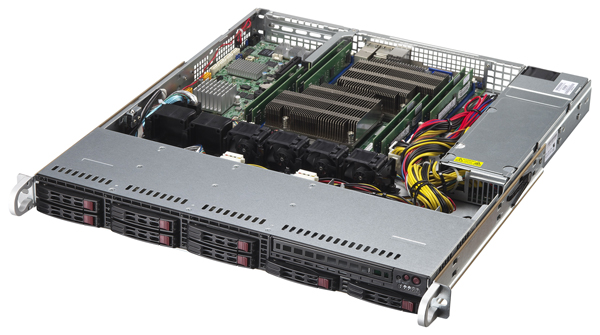
This is the Supermicro SuperServer SYS-1028R-MCTR which uses the X10DRL-CT motherboard which has higher end storage and network options but it could also house the X10DRL-i.
We can see this motherboard used for a wide variety of systems that might have space limitations. Going to a small form factor does limit the number of RAM slots and PCIe options. With a standard load out of 8GB DDR4 DIMM’s would max this board out at 64GB’s of RAM. This should be plenty of RAM space for most applications, if it would require a larger RAM space the only option would be to go to larger capacity DIMM packages which can be costly at this time. The number of PCIe slots should be able to handle most additional network card needs without going to a larger system.
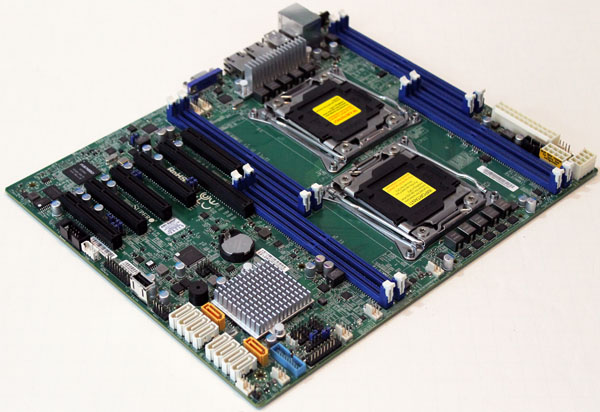
You can find the X10DRL-i online for around $350 street price which is fairly reasonable.

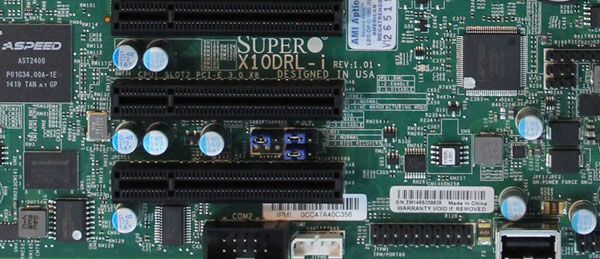
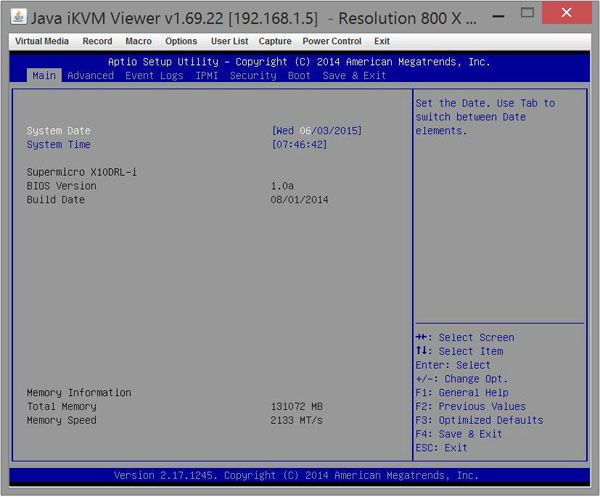



Very impressive, ATX size with balls. This opens up a market for the SMB customers who want smaller towers without need for a forklift to move it.
Hi, one question:
If memory modules are installed in different size capacity, how would the speed of the memory be impacted?
Thanks!
I meant mixed capacities, like 8,8,16,16, as opposed to 8,8,8,8 or 16,16,16,16. Thanks!
how can i create raid 10 over more than 4 disk? i can’t do it over embeded or windows software :(
You mentioned you used Crucial ddr4 ram was this UDIMM or ECC?